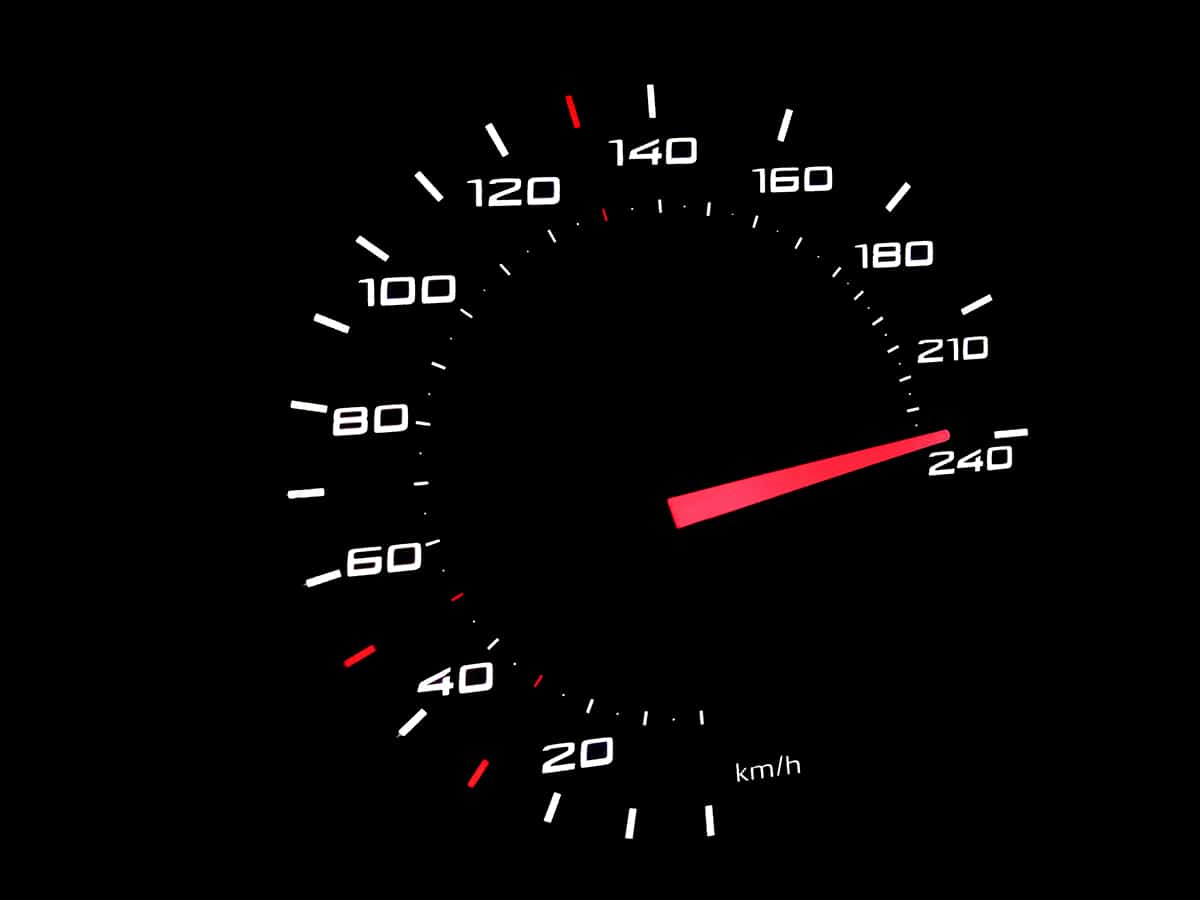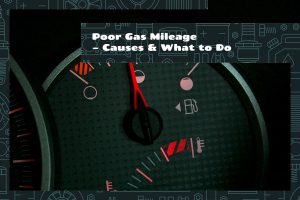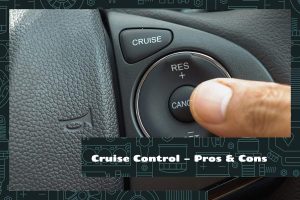Imagine this scenario: you’re cruising down the freeway and get pulled over by a cop who informs you that you’re driving 10 miles above or below the speed limit. Surprised, you try to argue that you’re driving at precisely 70 mph, which is what your speedometer shows, but the proof is in the video pudding.
A bad speed sensor may cause your vehicle’s speedometer to register erratic or inaccurate readings. Other symptoms of a bad speed sensor include:
- Flashing check engine light
- Transmission difficulties
- Cruise control problems
- Slow acceleration
- Slow idle
- Braking difficulties
- Transmission torque converter clutch problems
- Flashing ABS light
In this guide, I’ll explain what a speed sensor is, what can cause the speed sensors to fail, the symptoms of bad speed sensors, and how to tell when it’s time to replace the speed sensor.
What Is a Speed Sensor?
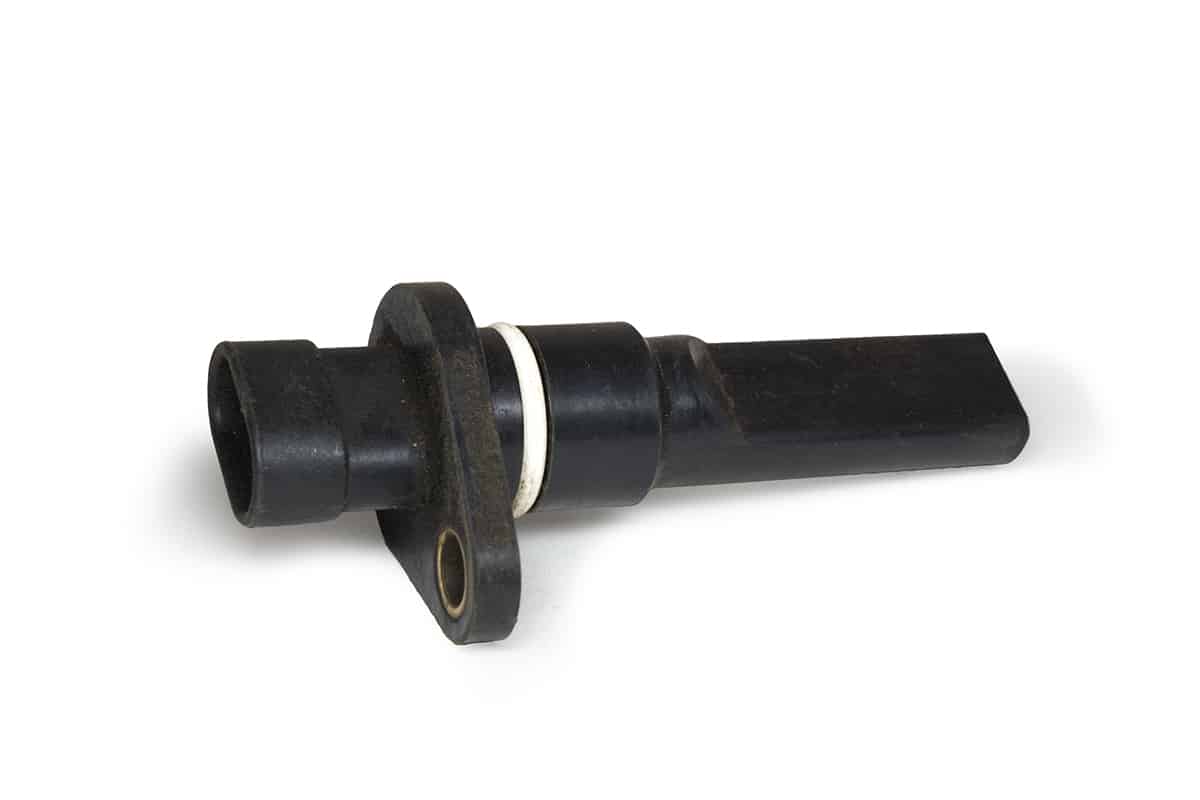
While in motion, the transmission’s actual gear ratio is determined by readings taken from the transmission’s speed sensors. The powertrain control module relies on information from two speed sensors, which typically work in tandem.
The input shaft speed (ISS) sensor is the primary one. This sensor is installed on the input shaft of the transmission and measures its rotational velocity. The other piece of hardware is an OSS (output shaft speed) sensor, which measures the speed of the output shaft. Both of these sensors are crucial to the transmission’s smooth operation, so any problems with either of them can have far-reaching effects.
Transmission speed sensors, also known as vehicle speed sensors (VSS), register data as the vehicle moves and relay that information to the powertrain control module (PCM), which then determines the optimal gear for the transmission based on that data. After determining the actual gear ratio, it is compared to the optimal ratio. When the PCM detects a mismatch between the selected gear and the actual gear, it stores a DTC (diagnostic trouble code) and turns on the warning light.
What Causes a Failing Speed Sensor?
There are usually 3 main causes for why your speed sensors are failing, which are as follows:
1. Internal damage to the sensors
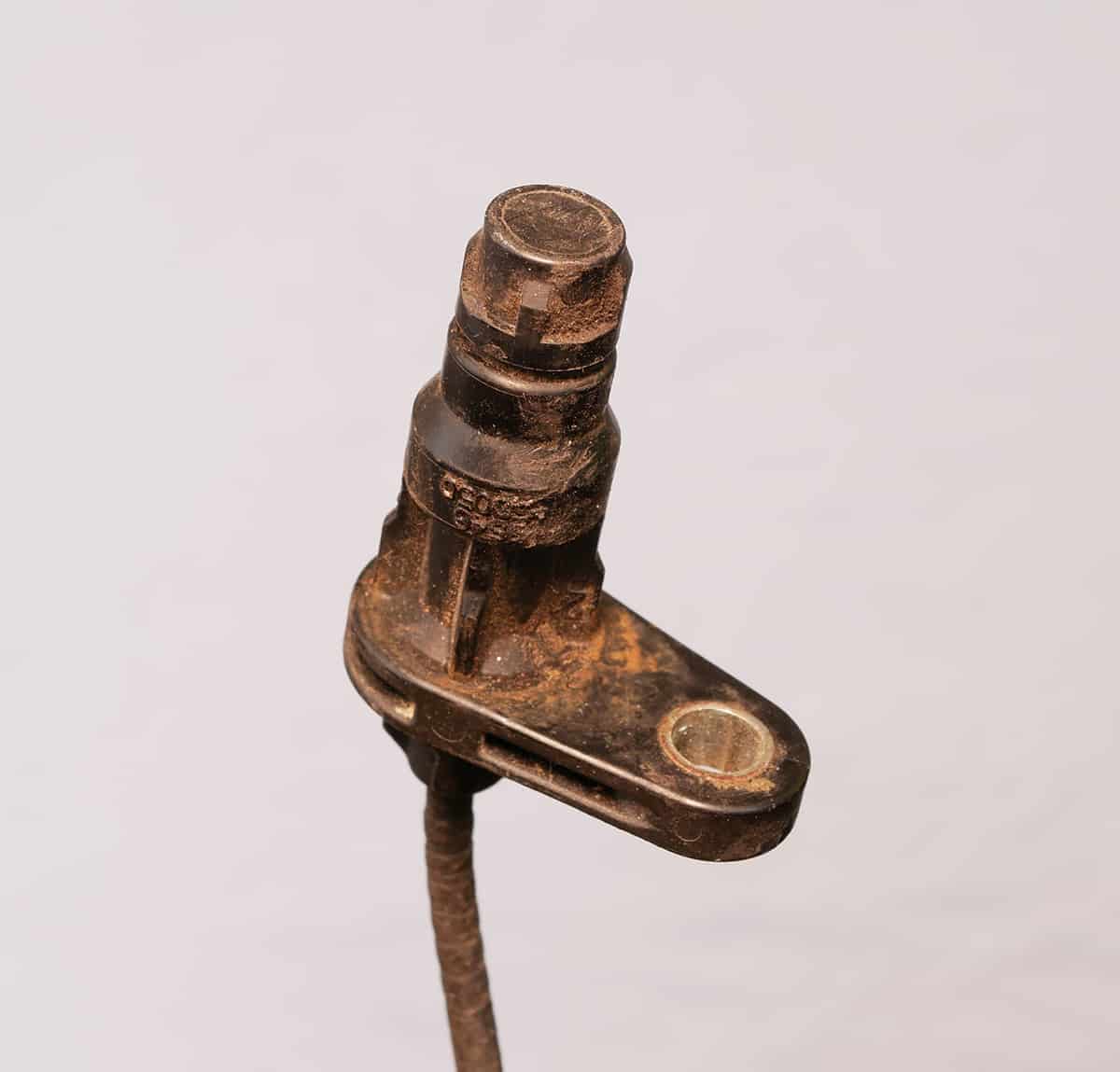
Mechanical wear and tear, corrosion, and extreme temperatures are all potential causes of internal damage to a speed sensor. The internal components of a sensor can be damaged by prolonged exposure to high temperatures. In addition, if any dirt or debris gets inside the sensor, it can wreak havoc on the internal components, leading to significant failure.
2. Cracked sensors
Damage to a speed sensor from a crack can manifest in a few distinct ways. The sensor’s internal components could be damaged if moisture or other contaminants made it through the crack. Corrosion of the sensor’s internal parts can disrupt its ability to accurately measure speed and cause it to fail if exposed to moisture.
It’s also possible that the sensor’s ability to send and receive signals has been compromised by the crack. The rotation of a wheel or axle can be detected by a speed sensor using either a magnetic or hall-effect mechanism. Damage to the sensor’s mechanical or electrical components responsible for this process can result from a crack.
3. The magnetic portion of the sensor has worn out over time
When determining how fast a wheel or axle is turning, a speed sensor’s magnetic components are crucial. The rotational speed of the wheel or axle is measured by an electrical signal generated by a magnet and a hall-effect sensor.
Breaks in the speed sensor’s magnetic components can result in a number of malfunctions. Sensors’ ability to accurately gauge velocity can be compromised if damaged components no longer send out a reliable signal. Inaccurate or erratic readings from the sensor can cause issues with the vehicle’s engine control module, transmission, or anti-lock braking system, among other things.
In addition, damaged magnetic components will render the sensor inoperable. If the magnet is damaged, it cannot produce the magnetic field required for the electrical signal to be generated. Similar to how a damaged hall-effect sensor cannot sense the magnetic field and generate the electrical signal, such a sensor would be useless in any application.
Bad Speed Sensor Symptoms
Let’s take a look at the different symptoms of a failing speed sensor to determine what you can do (if anything) to resolve the problem.
1. Flashing Check Engine Light
If the PCM detects a loss of signal from the transmission speed sensors, it will store a DTC, and the Check Engine light will flash. It can also show that the number of emissions from vehicles’ tailpipes has risen to dangerous levels.
2. Transmission difficulties
An issue with one of these sensors is another common cause of delayed shifts in automatic transmissions. Fluid pressure regulates gear ratios in an automatic transmission, making for a seamless shifting experience. Hard transmission shifts can cause damage to the transmission’s internal components, like the valve bodies, hydraulic lines, and mechanical gears.
Transmission systems use speed sensors to time the shift between gears. If the speed sensor is faulty, the transmission won’t work properly. As a result, the functioning of the automatic transmission will be negatively affected by a faulty speed sensor.
3. Cruise control problems
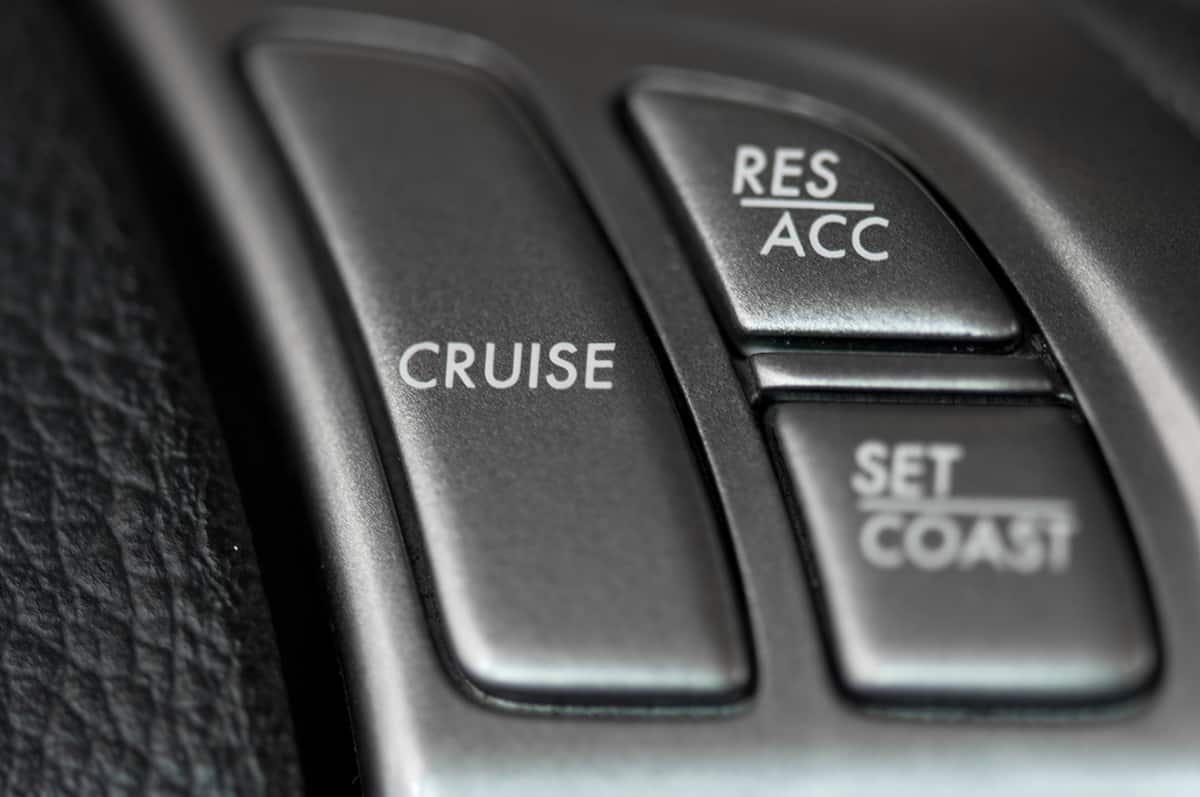
The cruise control relies in part on the information provided by the transmission speed sensors, which track both the input and output shaft speeds. If your car’s sensors aren’t sending reliable readings to the onboard computer, an error message will be transmitted to the engine control unit (ECU) by the PCM. The ECU will deactivate the cruise control as a preventative safety measure.
4. Inaccurate speedometer
If your car’s speedometer suddenly stops working, it’s a sure sign that your vehicle’s speed sensor is faulty. When the speed sensor breaks, the speedometer can’t tell you how fast you’re going.
Having no idea of your speed can be very unsettling, especially if there is little other traffic around to provide some kind of reference point. This behavior can lead to trouble with the law or even preventable accidents.
5. Slow acceleration
Your car’s engine speed sensor may be broken if you notice a slowdown when you accelerate and have trouble passing other vehicles on the highway. If your speed sensor is malfunctioning, your engine control unit won’t be able to determine how much fuel to inject into each cylinder.
Reduced power and an inability to pass other vehicles can be the consequences of poor acceleration. Your vehicle’s speed sensor may be malfunction if you’re having trouble getting around other vehicles on the highway. When the sensor isn’t working as it should, the ECU can’t determine the correct amount of fuel to inject into the cylinders. You’ll lose acceleration and be unable to pass slower vehicles if you do this.
6. Slow idle
A speed sensor failure can result in excessive idling and unnecessary fuel use. It slows down acceleration and causes other engine issues. It’s because the fuel system is receiving mixed signals from the location of the speed sensors.
Rough idling at low speeds or when accelerating from stoplights are the most typical speed sensor symptoms. If your car starts acting funny while you’re driving, you should probably get it checked out.
7. Braking difficulties
Braking problems are another common symptom of a faulty speed sensor. If it’s hard to press the brake pedal down, it’s probably because the speed sensors are broken and need fixing or replacing.
8. Torque converter clutch problems
At a predetermined speed, the torque converter clutch is engaged by the vehicle’s speed sensors. Unfortunately, the clutch and torque converter cannot be transferred using these sensors. There is no way for the clutch and torque converter to connect smoothly mechanically. The transmission may slip, lose efficiency, or overheat as a result of this issue.
9. Flashing ABS light
When the ABS warning light comes on, it means the vehicle’s speed sensor is broken. The speed sensor detects the rate of rotation of each wheel and relays that information to the vehicle’s electrical system, which in turn relays it to the ECM. Inaccurate signals from a malfunctioning speed sensor can disrupt the operation of other electronic components in the vehicle.
When the speed sensor is faulty, the ABS warning light will illuminate. This means the vehicle has no idea of its speed and cannot apply the brakes as needed.
Can You Drive with a Bad Speed Sensor?
Even though your car’s engine can start and you can accelerate and brake at any moment, it’s not recommended that you drive on a public road with a faulty speed sensor. If the VSS acts up in any way, it can put you and other motorists in danger since you’ll have less control over your vehicle and an inaccurate reading of how fast you’re actually going.
Can You Fix a Bad Speed Sensor?
No, you can’t. The only possible remedy for a bad speed sensor is to replace it completely. You will need to check the transmission or transaxle of your vehicle to access the speed sensor and visibly determine whether it’s busted or not. If you don’t know how, I suggest getting a professional mechanic to examine your car for you.
